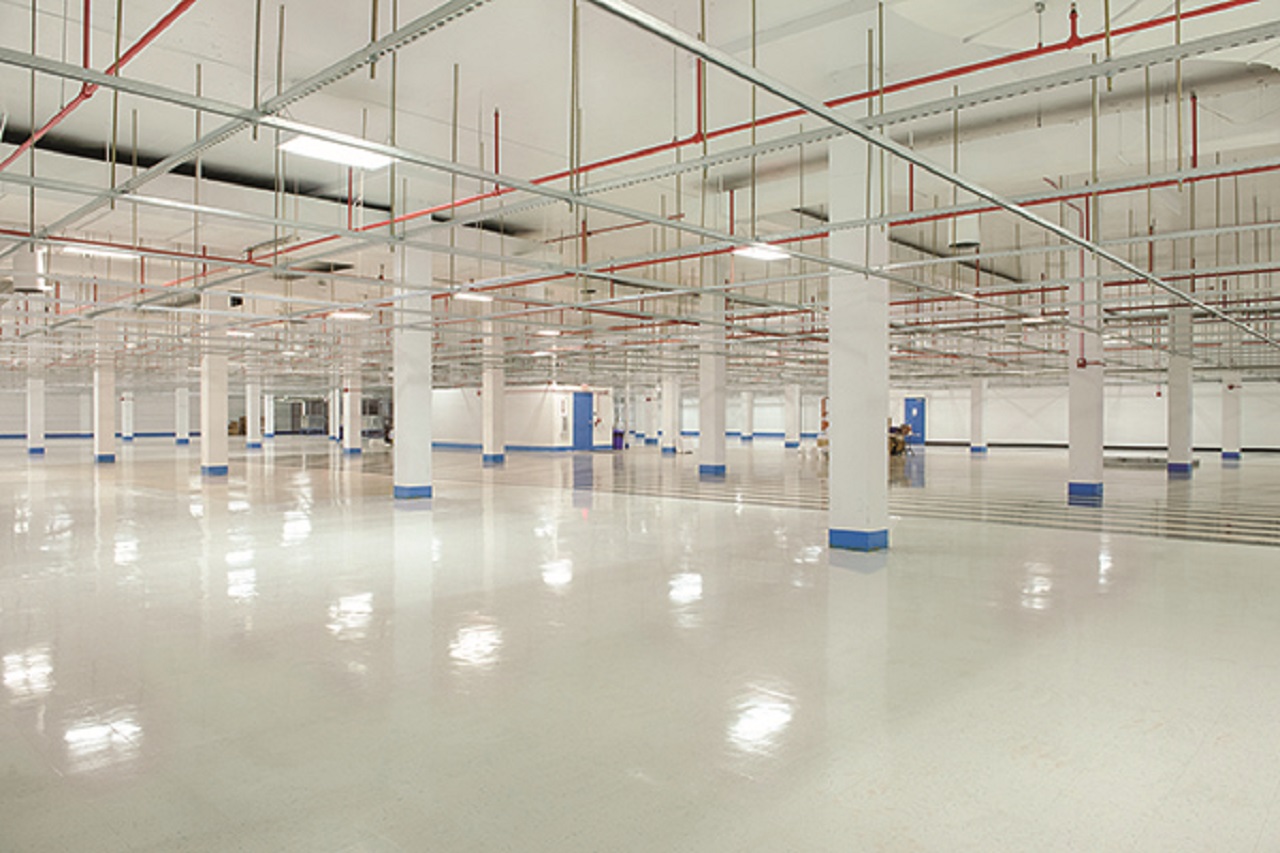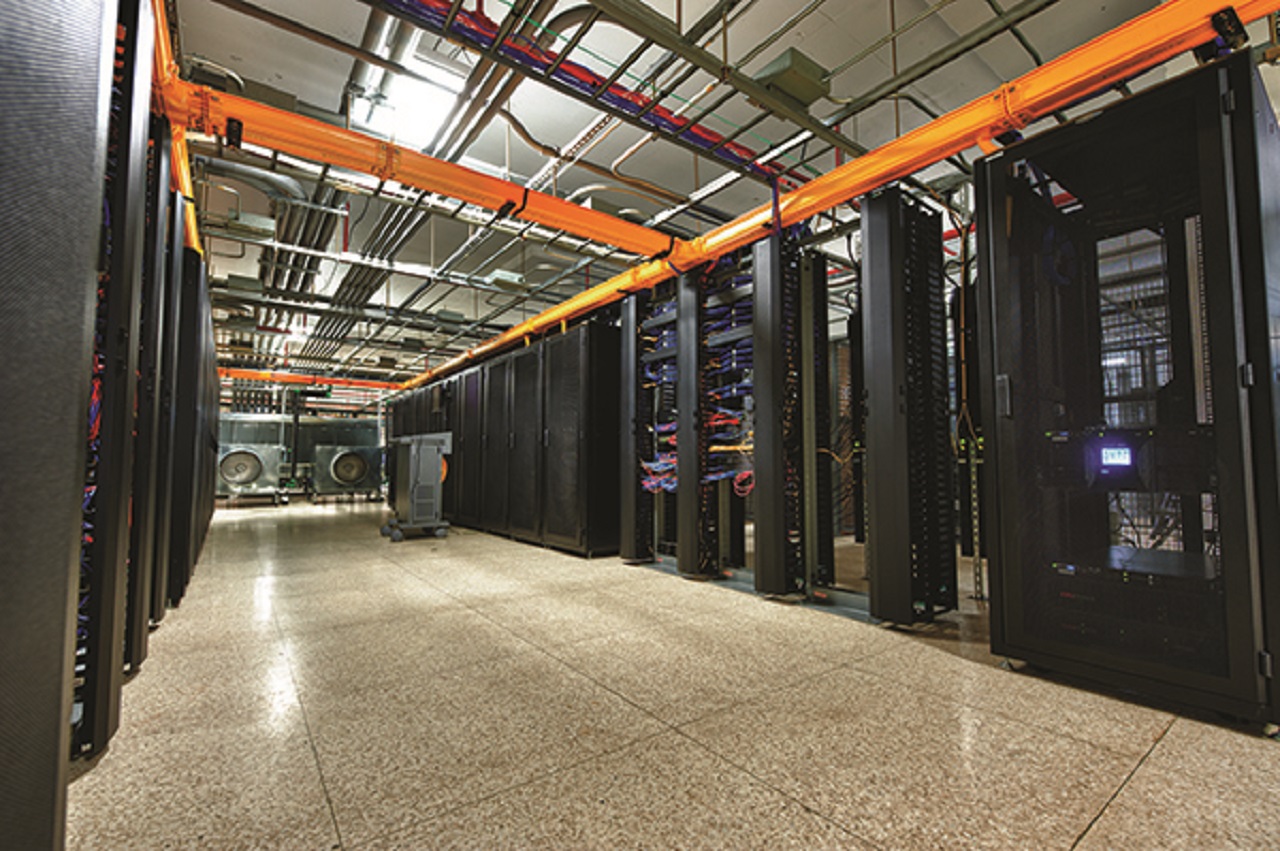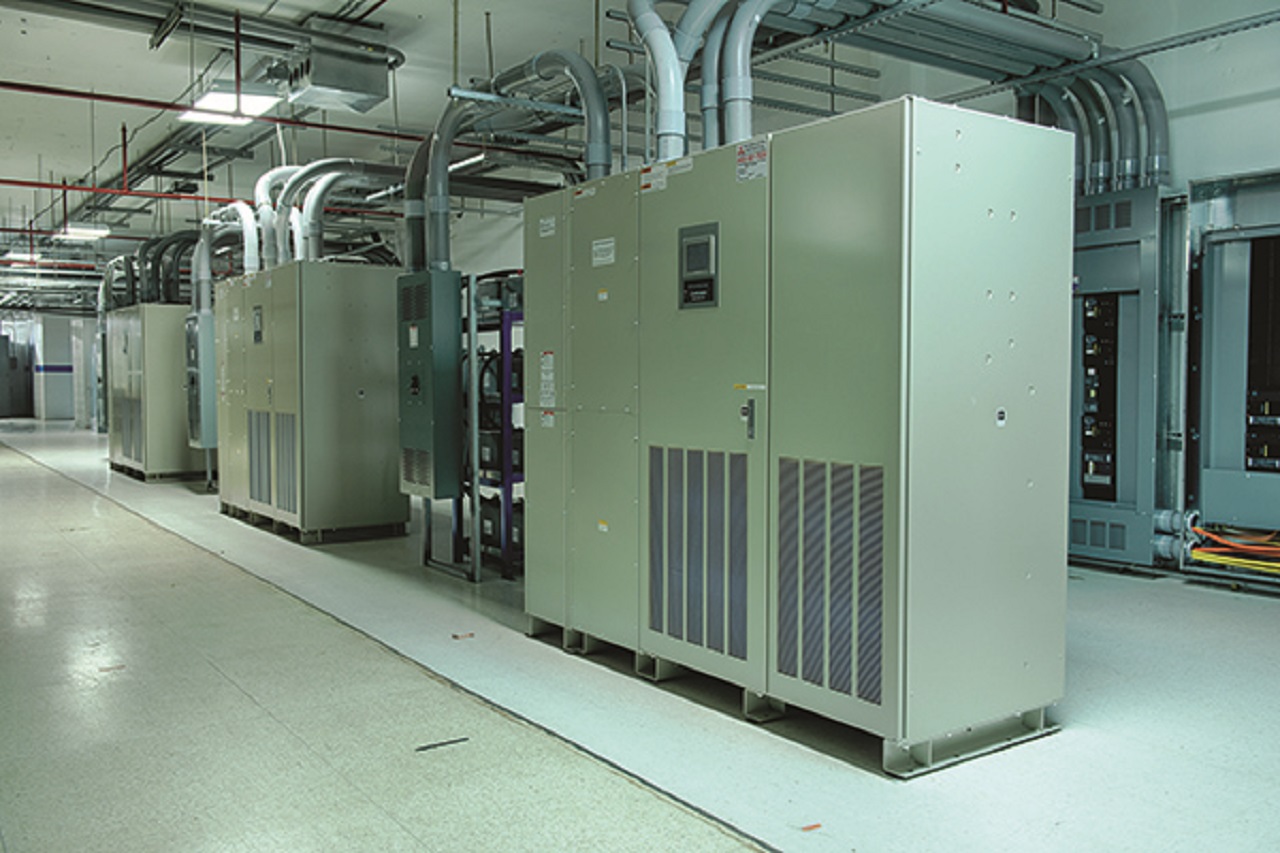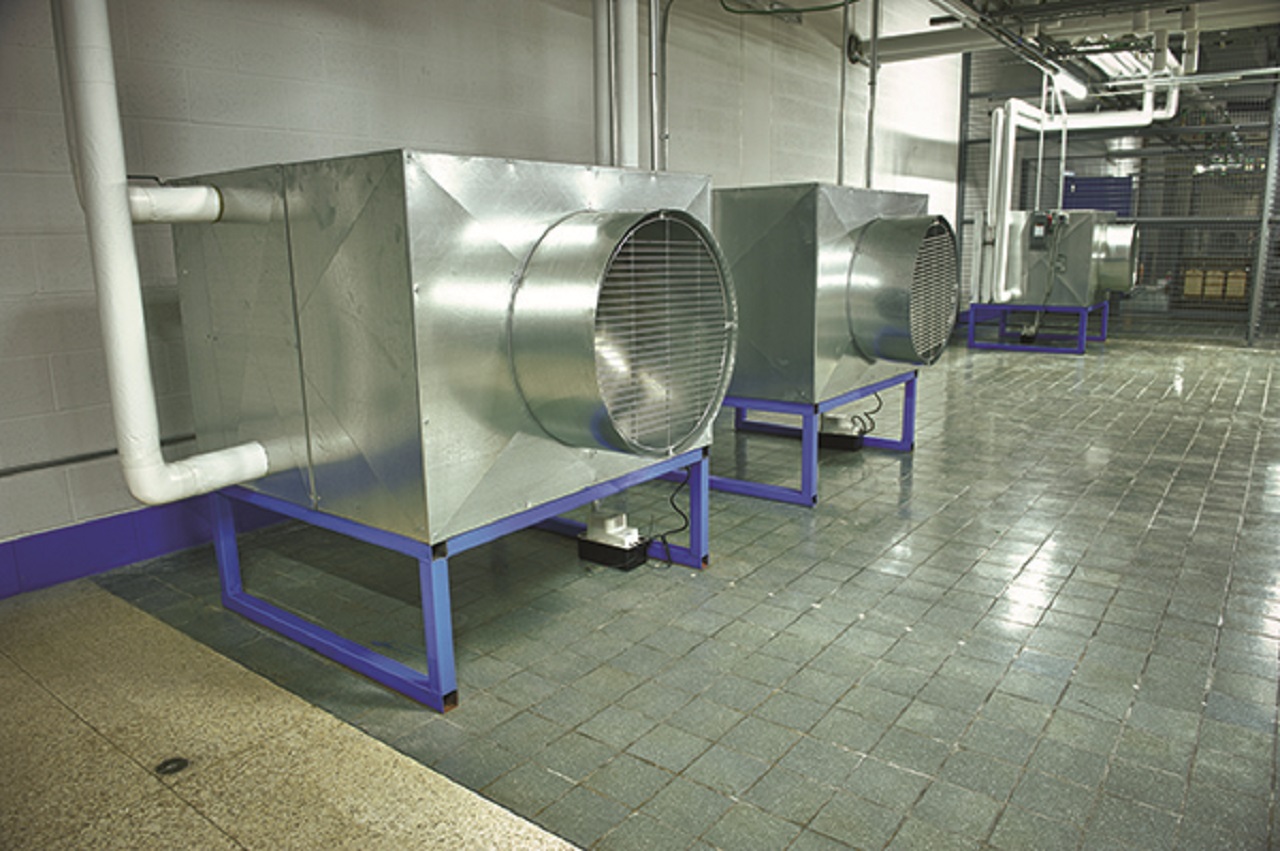From Dead Shopping Mall To High Tech Venue
Abandoned mall repurposed to wholesale co-location data center. Yes, from dead shopping mall to high tech venue, it took seven months to renovate the place.
George EvansFeb 22, 2024859 Shares19083 Views

Try to picture this one out: from dead shopping mall to high tech venue.
What could be the result - and who would even take the huge financial risk of renovating a run-down building?
Indianapolis data center developer-entrepreneurs and co-owners of Lifeline Data Centers, Alex Carroll and Rich Banta, not only saw the demand for data storage emerging, they also saw the immense data-center potential in a nearly 60-yr.-old shell of a pioneering-but-derelict Indianapolis shopping center that had become a haven for drug dealers and prostitutes and was about to be demolished by the city.
With a vision and a capital investment of $18 million, what was a community problem became a data-center Cinderella story for Carroll and Banta.
The Vision
Big online catalogs of construction products, Amazon orders, and millions of huge electronic medical records don’t just hang out in the “cloud,” the two entrepreneurs knew.
All the data must be stored somewhere in server farms, and the rapid and exponential growth in the amount of data consumed by businesses, individuals, and organizations has resulted in a dramatic rise in the demand for these facilities.
That’s what attracted Carroll and Banta to the derelict shopping mall.
The Action
The former Eastgate Shopping Center, on the Far Eastside neighborhood of Indianapolis and close to the intersection of several major highways, was considered the first major mall in Indiana, opening its doors in 1958.
Shoppers enjoyed icons of that shopping era: G.C. Murphy, Woolworth five-and-dime stores, Thom McAn Shoes, Kinney Shoes, Lerner Shops for women’s clothes, a National Shirt Shop, and numerous local stores.
The enclosed mall concept hadn’t been thought of - yet.
As consumer tastes and buying habits changed and new mall competition loomed, the 370,000-sq.-ft. center (about the size of six and half football fields) was enclosed, which saved it for a few years.
Ultimately, Eastgate closed in 2006, sitting dormant and becoming a neighborhood eyesore and safety hazard until 2008 when Carroll and Banta saw the opportunity to create a hardened wholesale co-location data center and office complex out of the retail skeleton.
The former H. P. Wasson’s department store in the original shopping center structure was built as a fallout shelter. The building shell could withstand EF5-level tornadoes, which can have speeds as high as 318 miles per hour (mph) and toss a car-sized object 330 feet.
The rest of the mall structure also has 80,000 sq. ft. of basements, which were originally intended to serve as tornado and fallout shelters.
Converting two levels of former retail space to a wholesale co-location data center required more than removing pizza ovens and clothing racks.
The demolition process took more than seven months and included disassembling and removing a pair of 1950s-era escalators.
A wholesale data center provides the space and technical environment to safeguard the equipment and data from hundreds of companies and institutions.
The operations floor looks like rows of large and small cages fabricated from chain-link fences.
Clients And Compliances
In a wholesale data center, the customer/client is responsible for the upkeep and maintenance of its own servers and equipment, but the data center provides the infrastructure to keep the systems running 24/7/365.
Lifeline Data Centers clients include:
- defense contractors
- government agencies
- several major medical, health, and educational institutions
- several national retailers
This means a wholesale co-location center must carry a SSAE16 SOC II Type II audit report and prove compliance and/or conformity with various standards. Among them include:
- BICSI (Building Industry Consulting Service International)
- FDA (Food and Drug Administration)
- FISMA (Federal Information Security Management Act of 2002)
- HIPAA (Health Insurance Portability and Accountability Act of 1996)
- NFPA (National Fire Protection Association)
- PCI-DSS (Payment Card Industry Data Security Standard)
- Sarbanes-Oxley (SOX) Act of 2002
- TIA-942 (Telecommunications Industry Association)
Clean, Redundant Power
Although the old shopping center had traditional large power service from Indianapolis Power and Light (IPL) in the range of 3 megawatts, it didn’t meet Lifeline’s stringent standards for:
- capacity
- redundancy
- clean power flow
In this case, clean refers to the quality of the electricity flow, with internal equipment eliminating cycle variations and electric noise.
Should the unthinkable occur and all inbound power is disrupted, 24 multiple-redundant uninterruptible power-supply systems would kick in immediately. Each uninterruptible power supply (UPS) has dedicated banks of batteries that provide uninterrupted power.
Redundancy is the byword at the Lifeline center.
The power to the data center is fed by dual utility feeds from separate IPL power substations.
One substation may go down for mechanical, electrical, or weather reasons but it’s unlikely, but not impossible, that the second substation would be affected. The two substations are about three miles apart.
Should the really unthinkable happen and the entire power grid suffer an extended outage, Lifeline Data Centers has 16 custom-engineered 500-kilowatt diesel generator sets controlled by automatic transfer switches.
Lifeline Data Centers maintains sufficient diesel fuel reserves to feed the generators for 60 hours.
The generators are exercised without load weekly and run under full load semiannually.
Photovoltaic Possibilities
Lifeline Data Centers has installed a utility-grade 4-mWac solar power array that could replace its traditional utility power feed. The new solar array should provide enough power for the data center for the next 25 years.
The array uses a ballasted-rooftop and a solar-shade-canopy configuration that also provides covered parking. The solar array will be connected to the local distribution network, which is owned and operated by IPL.
Environmental benefits from the green electricity produced by the solar array will offset an estimated 3,881 metric tons of CO2 emissions which is equivalent to:
- annual greenhouse gas emissions from 808 passenger vehicles
- carbon dioxide (CO2) emissions from 435,036 gallons of gasoline consumed
- CO2 emissions from 9,024 barrels of oil consumed

Tight HVAC Tolerances
Servers and other computer equipment in a data center are heat creators.
Even with the latest in CMOS (complementary metal-oxide semiconductor) technology, a typical server can raise the ambient temperature in its immediate area at 20 degrees Fahrenheit.
Multiply that heat load by the number of active servers and other equipment and a tremendous temperature load is created.
As a result, heat and humidity control are critical to data-center design.
Data centers optimally keep temperature and humidity between 64 degrees and 80 degrees Fahrenheit and 20% to 80% relative humidity.
The Lifeline Data Centers uses an isolated hot-aisle and cold-aisle layout.
The system has multiple redundant custom-designed “stick-built” 100-ton chilled-water plants and redundant chiller loops.
Precise temperature and humidity control not only affect the operational life of equipment, but also have an impact on the overall economics of the data center: for every degree increase in temperature, there is a 1.5% to 2% reduction in energy costs when cooling demand is reduced.
Over cooling is not necessarily a benefit.
The facility has a dual-fiber entrance and is a carrier-neutral operation, which means clients can connect through multiple service providers with no cross-connect fee.
It also is equipped with a fully automated, double interlocking, pre-action dry-pipe fire-suppression system to counter fires.
The Next Step
The experience of retro-fitting the Indianapolis shopping mall has been transferred to a new project.
Lifeline Data Centers is in the early stages of converting a former Target store to a data center in Fort Wayne, in northeast Indiana.
The store had been an anchor in the neighborhood but closed in late 2004.
Lifeline Data Centers purchased the 111,000-sq.-ft. building (the size of nearly two full football fields) to create wholesale co-location data center services for the area.
The service territory could extend from the Ft. Wayne area to Warsaw, Indiana, a global hub for biomedical research and manufacturing, to Toledo, Ohio, and almost to Detroit.
Although the building was sufficient for typical retail, it will require an investment of more than $15 million over seven years to harden the structure to required specifications, including creating a 12-inch concrete wall around the entire building perimeter and a roof capable of withstanding a 120 mph F2 tornado.
From dead shopping mall to high tech venue, Alex Carroll and Rich Banta are always up for the challenge.
Latest Articles
Popular Articles

